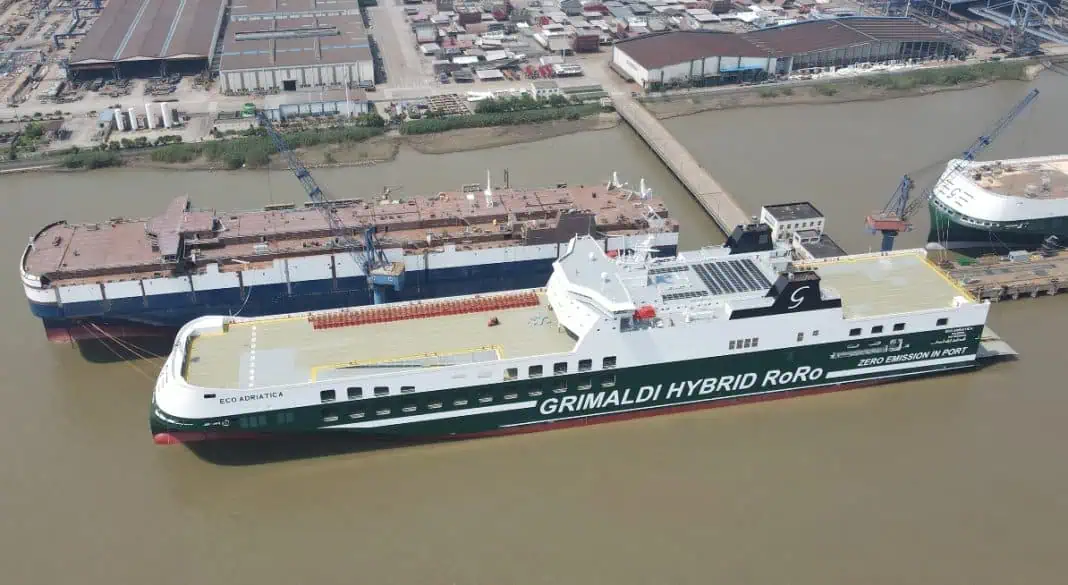With the delivery of the Eco Adriatica, the fleet of Grimaldi Green 5th Generation (GG5G) class hybrid vessels is almost complete. This is the eleventh of twelve state-of-the-art units ordered from the Chinese Jinling shipyard located in Nanjing. Thanks to their unique design, the GG5G-class ships are not only the largest ro-ro units in the world for short sea shipping, but also the most eco-friendly.
The Eco Adriatica flies the Italian flag, has a length of 238 meters, a beam of 34 meters, a gross tonnage of 67,311 tonnes and a service speed of 20.8 knots. The loading capacity of her seven decks – two of which are hoistable – is twice that of the previous class of short sea ro-ro ships deployed by the Grimaldi Group: in fact, the vessel can carry some 7,800 linear meters of freight, equivalent to around 500 trailers and 180 cars.
However, the increase in capacity does not affect fuel consumption, thanks to the adoption of numerous highly innovative technological solutions that optimize the ship’s operational and environmental performance: in fact, at the same speed, the Eco Adriatica consumes the same amount of fuel compared to the previous generation ro-ro ships, and is therefore able to halve CO2 emissions per unit transported.
The vessel is equipped with state-of-the-art, electronically controlled engines and with an exhaust gas cleaning system for the reduction of sulphur and particulate emissions. In addition, during port stays, the Eco Adriatica is capable of cutting emissions to zero by using the electricity stored in mega lithium batteries with a total power of 5 MWh; these are recharged during navigation thanks to shaft generators and 350 m2 of solar panels.
“It is not enough to talk about ecological transition: we must bring about change, and our Group is doing it by making its fleet increasingly modern, efficient and sustainable”, said Emanuele Grimaldi, Managing Director of the Neapolitan shipping company. “With ships such as the Eco Adriatica and her GG5G-class sister units, we concretely contribute to reducing the environmental impact of maritime transport in Europe “











